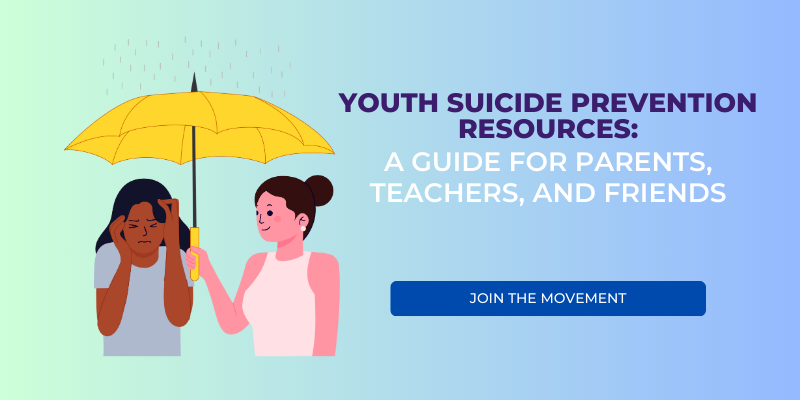Youth suicide is a heartbreaking tragedy that affects families, schools, and communities. The statistics from the World Health Organization show that suicide ranks third among all the causes of death among 15-29-year-olds in the world. For each young person who goes as far as committing suicide, many others attempt or silently suffer. Early intervention and support can save lives, and everyone, including parents, teachers, and friends have to play their part.
In this blog we will cover some major, on-the-ground steps that can help in youth suicide prevention.

Signs to Watch out for
The most important step, before anything else, in preventing suicide is knowing the signs of suicidal thoughts in young people. The common indicators include:
Emotional Signs: Persistent sadness, withdrawal from friends and family, or hopelessness.
Behavioral Changes: Declining academic performance, loss of interest in activities, or risky behaviors.
Verbal Cues: Speaking of wanting to end their lives, saying they feel like a burden, or otherwise expressing how they seem without a purpose.
You should always consider every cue seriously. Open communication and timely action can be the critical difference.
Role of Parents
Parents are usually the front line where youth mental health struggles are spotted. Here’s how you can help:
- Create a Safe Space: One encourages an open, judgment-free conversation about emotions and struggles.
- Monitor Mental Health: Keep track of changes in mood, behavior, or routine.
- Seek Professional Help: Connect your child with youth mental health professionals – therapists or counselors.
- Contain Stressors: Help your child live within limits and balance daily routines, and help calm them down when needed.
- Be Informed: Find out about local as well as Internet-based resources like hotline numbers and online help groups for crisis intervention.
Role of Teachers and School Staff
Instructors interact daily with students and can identify the early signs. Some strategies include:
- Promoting Safe Environment: Foster a culture of kindness, inclusion, and understanding.
- Knowing the Resources: Be prepared to connect students with school counselors or community-based support services.
- Participating in Training: Take advantage of mental health awareness and suicide prevention training offered by schools.
- Communicating: Notify parents or guardians if a student exhibits concerning behavior.
Role of Friends
Friends often hear about struggles that adults might miss. If you’re worried about someone, you can:
- Listen Non-Judgmentally: Allow them to feel and talk about their emotions without interrupting or judging.
- Ask directly: Ask direct and yes/no questions like, “Are you considering hurting yourself?”
- Offer Help: Encourage seeking professional assistance and accompany them if need be.
- Stay Engaged: Check in sporadically and it could be what helps young people over time.
Resources for Youth Suicide Prevention
National Suicide Prevention Lifeline
- U.S.: Dial 988
- Provides 24/7 free and confidential support for individuals in distress.
Crisis Text Line
- Text HOME to 741741
- Available in the U.S., UK, and Canada for immediate text-based support.
The Trevor Project
- Website: TheTrevorProject.org
- Focused on LGBTQ+ youth, offering a lifeline, text, and chat support.
Teen Mental Health
- Website: TeenMentalHealth.org
- Resources for understanding and improving mental health.
Local Counseling Services
- Schools, community centers, and healthcare providers often offer access to counseling at little to no cost.
In Conclusion
Youth suicide prevention is possible, and the collective efforts of parents, teachers, and friends can make a life-saving difference. By staying informed, recognizing the signs, and providing support, we can create a safety net for young people struggling with mental health issues.
If you or someone you know is in crisis, do not hesitate to call any of the suicide prevention resources on our website. Together, we can build a brighter and more hopeful future for our youth.

